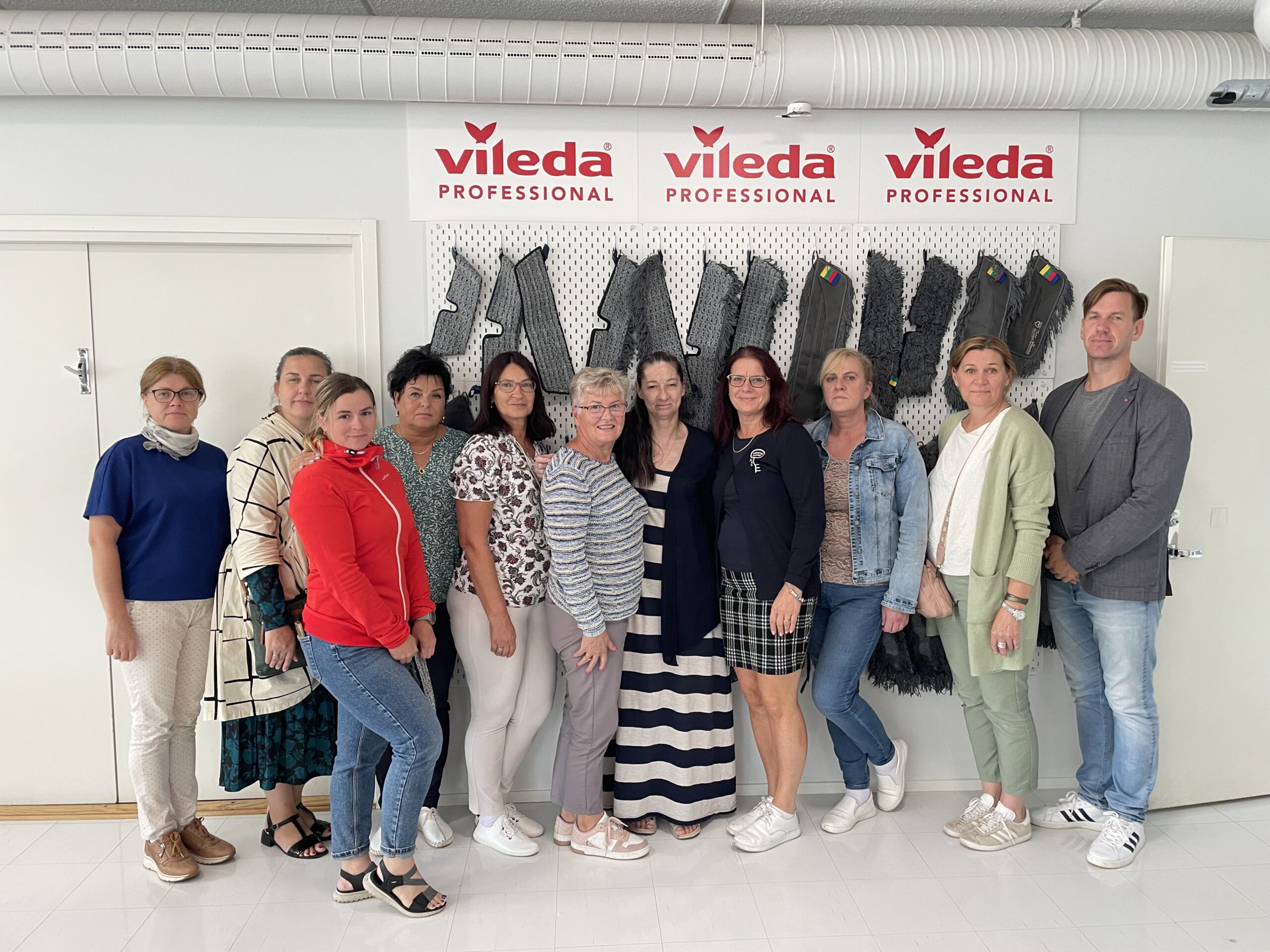info@puhastusekspert.ee +372 5611 1048
Learning Mobility to Finland August 26-27, 2024
What are the new cleaning principles in Finland? We investigated this during a learning mobility on August 26-27, 2024, at Helsinki University Central Hospital and the Vileda factory. Consortium members from Järvamaa Vocational Education Centre, East Tallinn Central Hospital, Narva Hospital Foundation, Tartu Vocational College, Tartu University Hospital Foundation, and North Estonia Medical Centre participated in the job shadowing. The learning mobility was supported by Erasmus+ consortium learning mobility projects no. 2023-1-EE01-KA121-VET-000133792 and 2024-1-EE01-KA121-VET-000236654.
The learning mobility program and job shadowing were organized by the host organization Freudenberg Home & Cleaning Solutions Oy – Aiki Hoffmann and Petteri Enne.
The learning mobility program and job shadowing were organized by the host organization Freudenberg Home & Cleaning Solutions Oy – Aiki Hoffmann and Petteri Enne.

Helsinki University Central Hospital (HUS)
During the learning mobility, job shadowing took place at Helsinki University Central Hospital (HUS). HUS Hospital is Finland’s largest healthcare provider. The hospital’s various buildings span a total of seven kilometers, connected by corridors. During the job shadowing, it was explained why there are cabinets behind ward doors – these are for storing items such as plasters, bandages, and diapers. To simplify cleaning, HUS Hospital uses robotic floor scrubbers. Cleaning is performed as automatically as possible; for example, beds, trolleys, and other movable items are cleaned in washing machines. Machine washing ensures a better cleaning result than manual cleaning.

Vileda Factory in Finland:
During the learning mobility, job shadowing took place at the Vileda factory in Finland, where various production stages were reviewed from start to finish – including material selection, sewing, environmental friendliness, and environmental sustainability. Interesting facts about Vileda production:



Artikli autor: Helge Alt